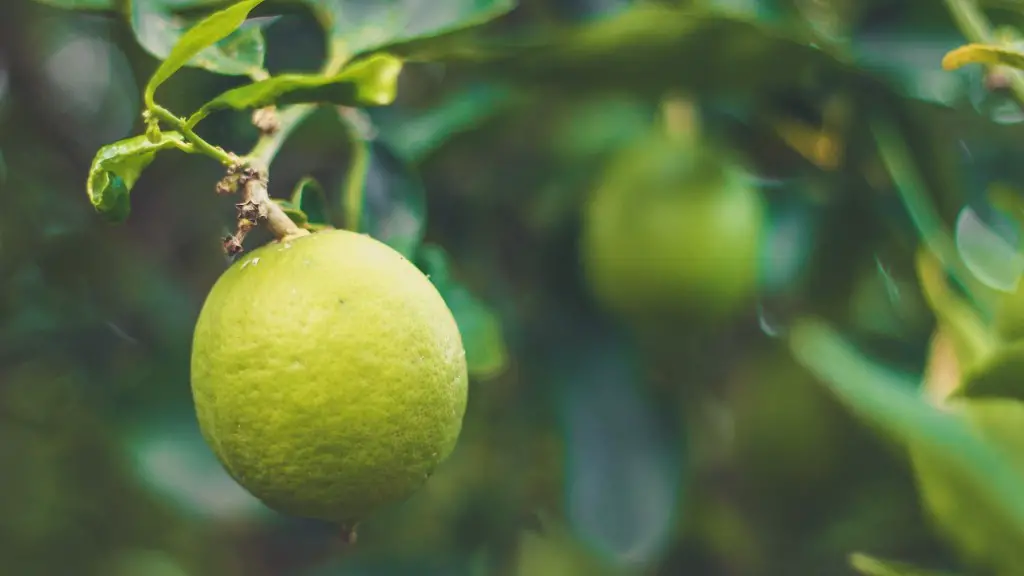Growing a lemon tree from seed is a rewarding experience and can be done with basic household items. To begin, you need to obtain a lemon with a viable seed. The juicier the lemon and the more abundant the seeds, the better chance you have of success. The next step is to soak the seed in a cup of water. This helps to clean the seed and makes it easier to separate it from the pulp. Once the seed is clean, you must plant it in potting soil mixed with loam, peat, and vermiculite. Water it regularly and ensure the soil is always moist. Place the pot in a sunny location and begin to nurture your new tree.
Temperature Requirements
The ideal temperature for a lemon tree seedling is between 65-75 degrees Fahrenheit. Temperatures that are too hot or cold can affect the growth of the tree and even cause it to die if exposed for too long. Keep the tree’s pot in a location that is mostly shaded and away from direct sunlight or sources of extreme heat. Additionally, it is recommended to keep the plant indoors during winter months to maintain the ideal temperature.
Soil Requirements
The type of soil affects the growth of the lemon tree seedling. It should be well drained and have a PH rating of 6-7. Adding fertilizer will also help promote healthy growth as the tree establishes roots. However, make sure to choose a fertilizer that is specifically formulated for citrus plants and adjust the amount according to the tree’s size. It should be applied during the growing season and then discontinued for the winter months.
Synthetic and Natural Fertilizers
Using synthetic fertilizers to feed your lemon tree is a convenient method that provides the proper nutrients your plant needs. Natural fertilizers such as compost or mulch are also viable alternatives. Compost can be added to the soil and mulch can be placed around the base of the tree to hold moisture. However, too much mulch can cause the roots of the tree to suffocate, so it is important to keep the layers of mulch to a minimum.
Repotting and Pruning
Repotting your lemon tree is necessary every two years to ensure the plant receives enough space to grow and to replenish the soil. This also helps to prevent root rot and other diseases. Pruning is also a vital part of caring for a lemon tree. Cut away any diseased or dying branches and shape the tree to ensure it does not become overcrowded. This will ensure the tree’s growth is plentiful and healthy.
Pest Control
Pesky bugs, such as aphids and mites, like to feed on lemon tree leaves and fruit. To prevent an infestation, regularly inspect your tree for any signs of bugs or eggs. Keep the leaves pruned and free of debris to help prevent the pests from settling. If an infestation occurs, spray a natural organic insecticide, such as neem oil, onto the tree. Follow the instructions carefully and discontinue use after the infestation has been eliminated.
Watering Requirements and Growth Rate
Lemon tree seedlings require adequate watering to survive. Make sure to keep the soil surrounding the tree evenly moist, but not soggy. As your lemon tree matures, it will require more water, so adjust the waterings accordingly. The growth rate for your lemon tree seedling will vary depending upon the climate, soil, and fertilization it receives. The tree will typically enter the flowering and fruiting stages within 2-3 years.
Reasons for Limiting Growth
The growth of a lemon tree can be stunted if it doesn’t receive the proper care and nutrition. Soil that is too alkaline, low humidity, and extreme temperatures can all contribute to limiting the growth of the tree. Additionally, too much or too little water, lack of fertilizer, and pests can all impede the growth. Finally, an unwatered soil can result in a weakened root system and ultimately impact the performance of the tree.
Reasons to Harvest and Propagate
Harvesting your lemon tree will naturally promote healthy growth. The pruning of lemons will encourage the growth of more branches. When more branches are present, more lemons can be produced. Propagating cuttings from your tree can also produce more lemons. Cuttings are best taken from younger branches with several leaves and placed in moist soil without direct sunlight until the new tree is established.
Synthetic and Natural Herbicides
Synthetic herbicides can be applied to control the weeds around your lemon tree. To ensure the herbicides do not damage your tree, only use ones that are specifically formulated for citrus trees and read the instructions prior to use. Alternatively, a solution of vinegar, salt, and dish soap can be used as a natural herbicide. Once the weeds are controlled, apply a thin layer of mulch around the tree’s base. The mulch will help keep the weeds away and will also assist with maintaining soil moisture.

